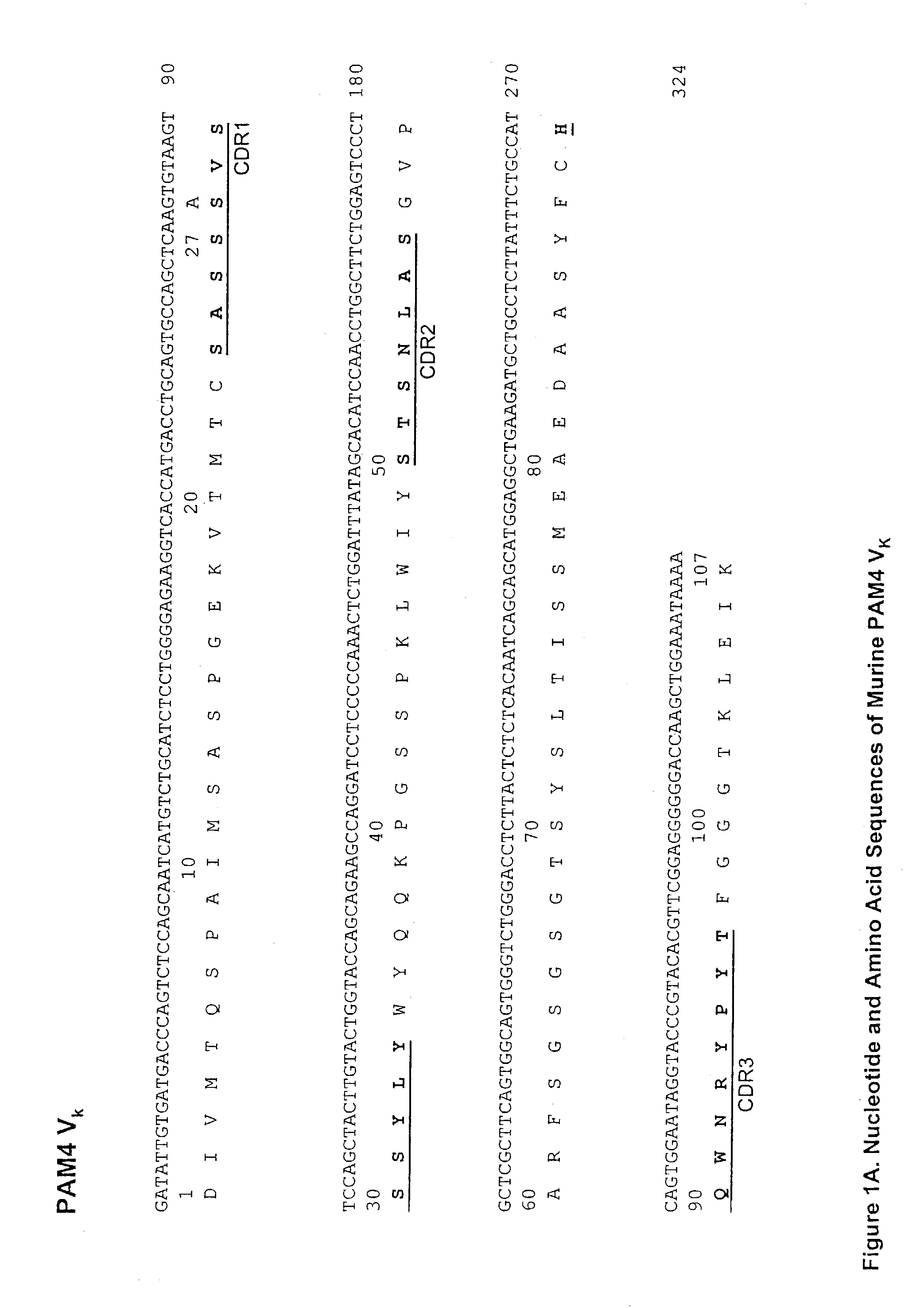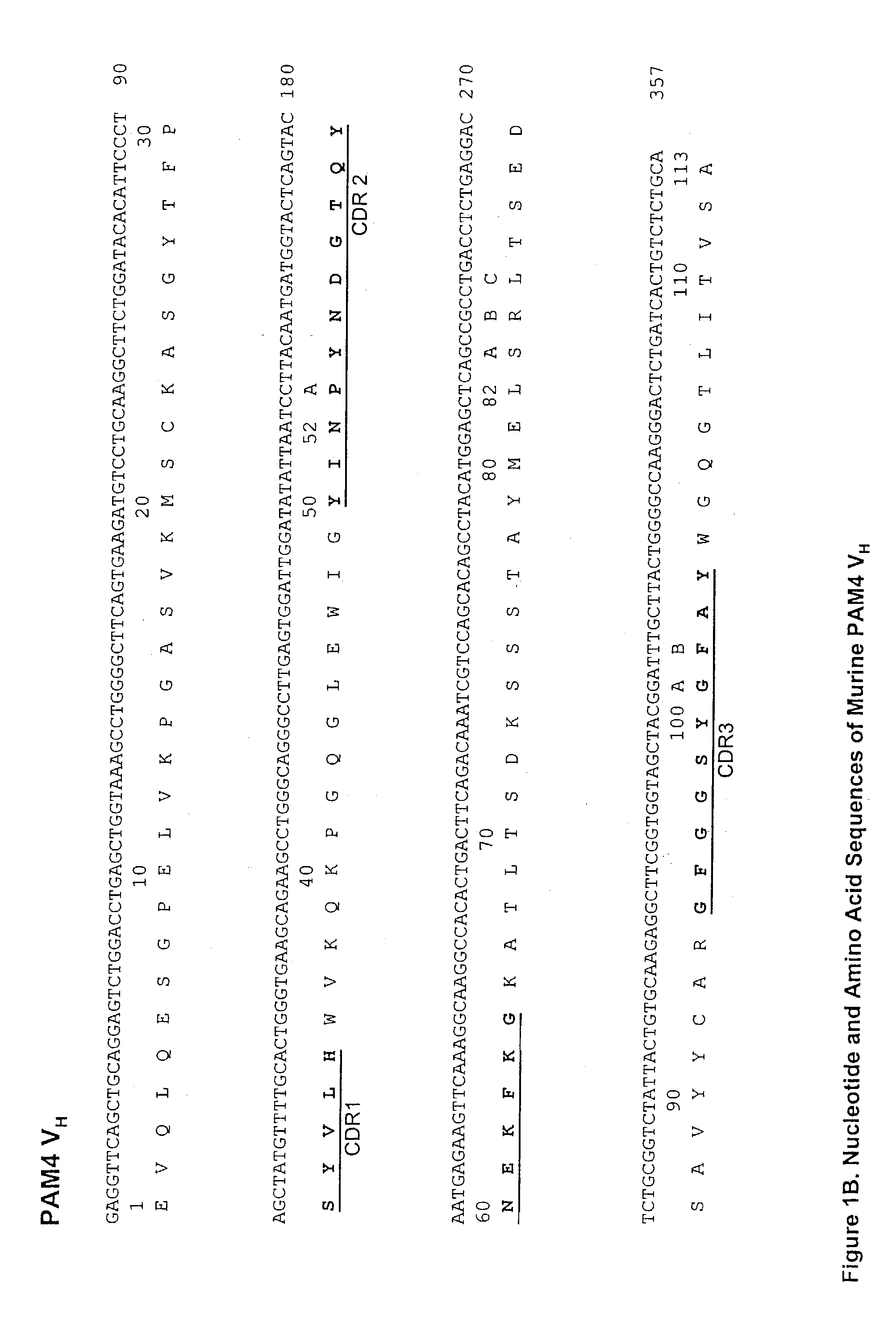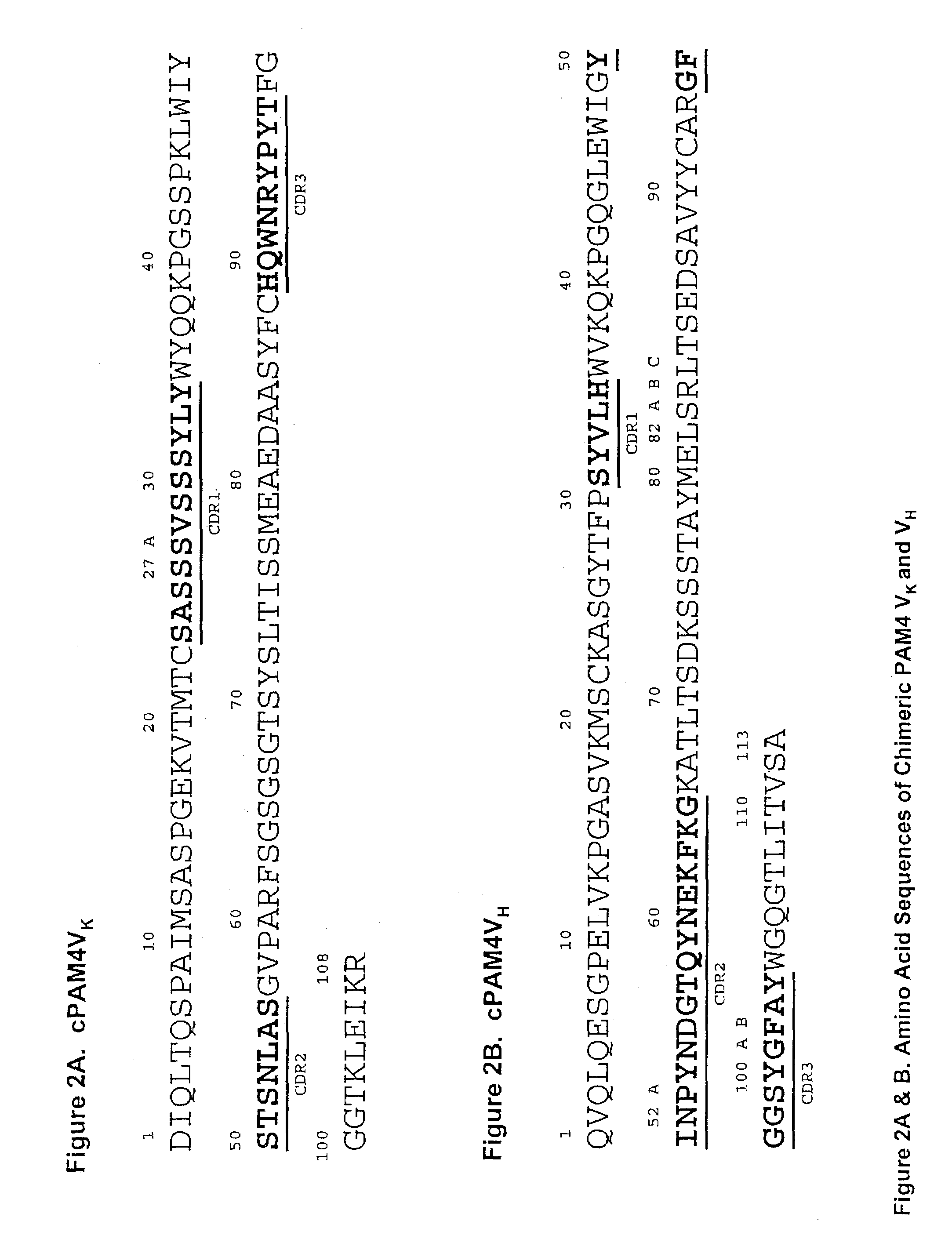Monoclonal antibody cPAM4
a monospecific antibody and monoclonal antibody technology, applied in the field of monospecific antibodies, monospecific antibodies, multispecific antibodies, etc., can solve the problems of difficult diagnosis of pancreatic cancer at an early stage of tumor growth, difficult to distinguish pancreatic cancer from focal pancreatitis, and difficult to reliably detect small tumors
- Summary
- Abstract
- Description
- Claims
- Application Information
AI Technical Summary
Benefits of technology
Problems solved by technology
Method used
Image
Examples
example 1
Immunohistochemistry Staining Studies
[0196]Immunohistochemistry on normal adult tissues showed that the PAM4 reactive epitope was restricted to the gastrointestinal tract where staining was weak, yet definitely positive (Table 1). Normal pancreatic tissue, including ducts, ductules, acini, and islet cells, were negative for staining. A PAM4 based enzyme immunoassay with tissue homogenates as antigens generally supported the immunohistology data (Table 2). The PAM4 epitope was absent from normal pancreas and other nongastrointestinal tissues. In neoplastic tissues, PAM4 was reactive with twenty one out of twenty five (85%) pancreatic cancers (Table 3). PAM4 reactivity appeared to correlate with the stage of tumor differentiation. For example, twenty out of twenty one well and moderately differentiated pancreatic tumors were positive whereas only one out of four poorly differentiated tumors were positive. Generally, poorly differentiated tumors represent less than 10% of all pancreati...
example 2
In Vivo Biodistribution and Tumor Targeting of Radiolabeled PAM4
[0202]Initial biodistribution studies of PAM4 were carried out in a series of four different xenografted human pancreatic tumors covering the range of expected differentiation. Each of the four tumor lines employed, AsPc1, BxPc3, Hs766T and CaPan1, exhibited concentrations of 131I-PAM4 within the tumors (range: 21%-48% ID / g on day three) that was significantly (p<0.01-0.001) higher than concomitantly administered nonspecific, isotype-matched Ag8 antibody (range: 3.6%-9.3% ID / g on day three). The biodistribution data were used to estimate potential radiation doses to the tumor of 12,230; 10,684; 6,835; and 15,843 cGy / mCi of injected dose to AsPc1, BxPc3, Hs766T and CaPan1, respectively. With an actual maximum tolerated dose (MTD) of 0.7 mCi, PAM4 could provide substantial rad dose to each of the xenografted tumor models. In each tumor line the blood levels of radiolabeled PAM4 were significantly (p<0.01-0.001) lower than...
example 3
Development of Orthotopic Pancreatic Tumor Model in Athymic Nude Mice
[0205]In order to resemble the clinical presentation of pancreatic cancer in an animal model more closely, applicants developed an orthotopic model by injecting of tumor cells directly into the head of the pancreas. Orthotopic CaPan1 tumors grew progressively without overt symptoms until the development of ascites and death at ten to fourteen weeks. By three to four weeks post-implantation, animals developed a palpable tumor of approximately 0.2 g. Within eight weeks of growth, primary tumors of approximately 1.2 g along with metastases to the liver and spleen were observed (1-3 metastatic tumors / animal; each tumor <0.1 g). At ten to fourteen weeks seeding of the diaphragm with development of ascites were evident. Ascites formation, and occasional jaundice, were usually the first overt indications of tumor growth. Ascites is an accumulation of fluid in the abdominal cavity and jaundice is a yellowing of the skin an...
PUM
| Property | Measurement | Unit |
|---|---|---|
| Force | aaaaa | aaaaa |
| Electric charge | aaaaa | aaaaa |
| Current | aaaaa | aaaaa |
Abstract
Description
Claims
Application Information
 Login to View More
Login to View More - R&D
- Intellectual Property
- Life Sciences
- Materials
- Tech Scout
- Unparalleled Data Quality
- Higher Quality Content
- 60% Fewer Hallucinations
Browse by: Latest US Patents, China's latest patents, Technical Efficacy Thesaurus, Application Domain, Technology Topic, Popular Technical Reports.
© 2025 PatSnap. All rights reserved.Legal|Privacy policy|Modern Slavery Act Transparency Statement|Sitemap|About US| Contact US: help@patsnap.com



